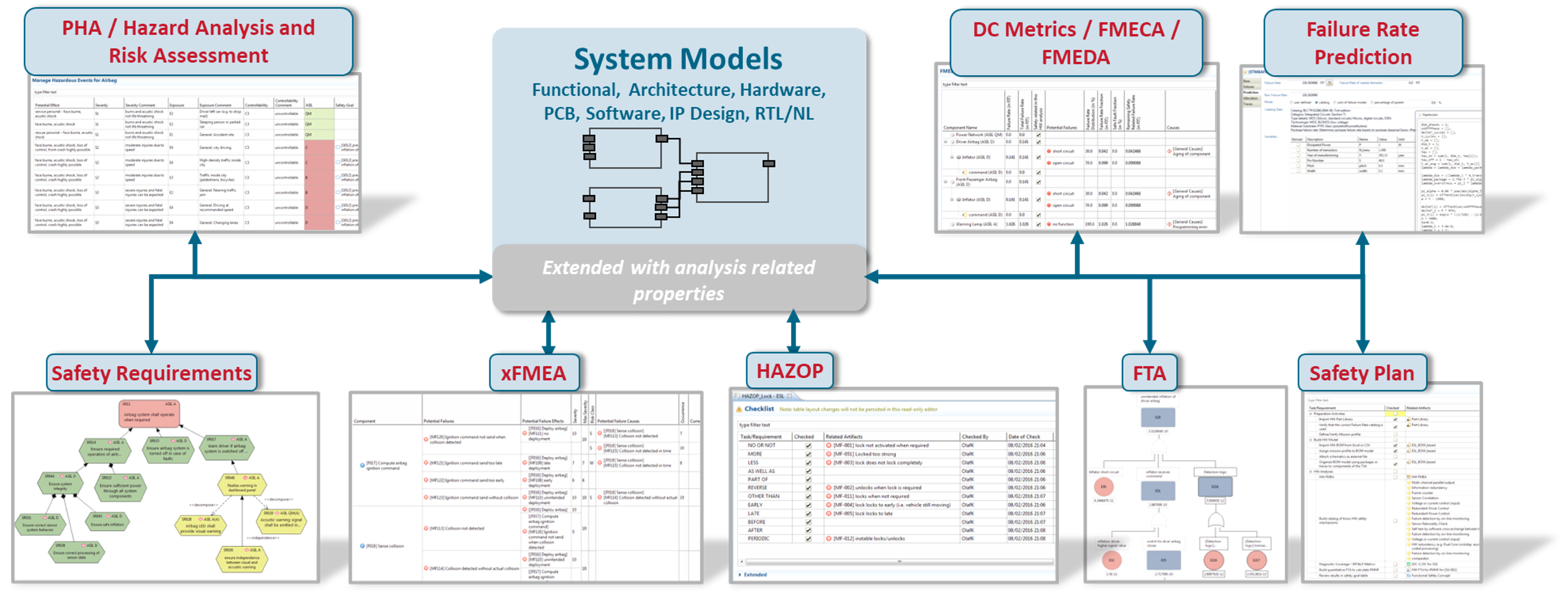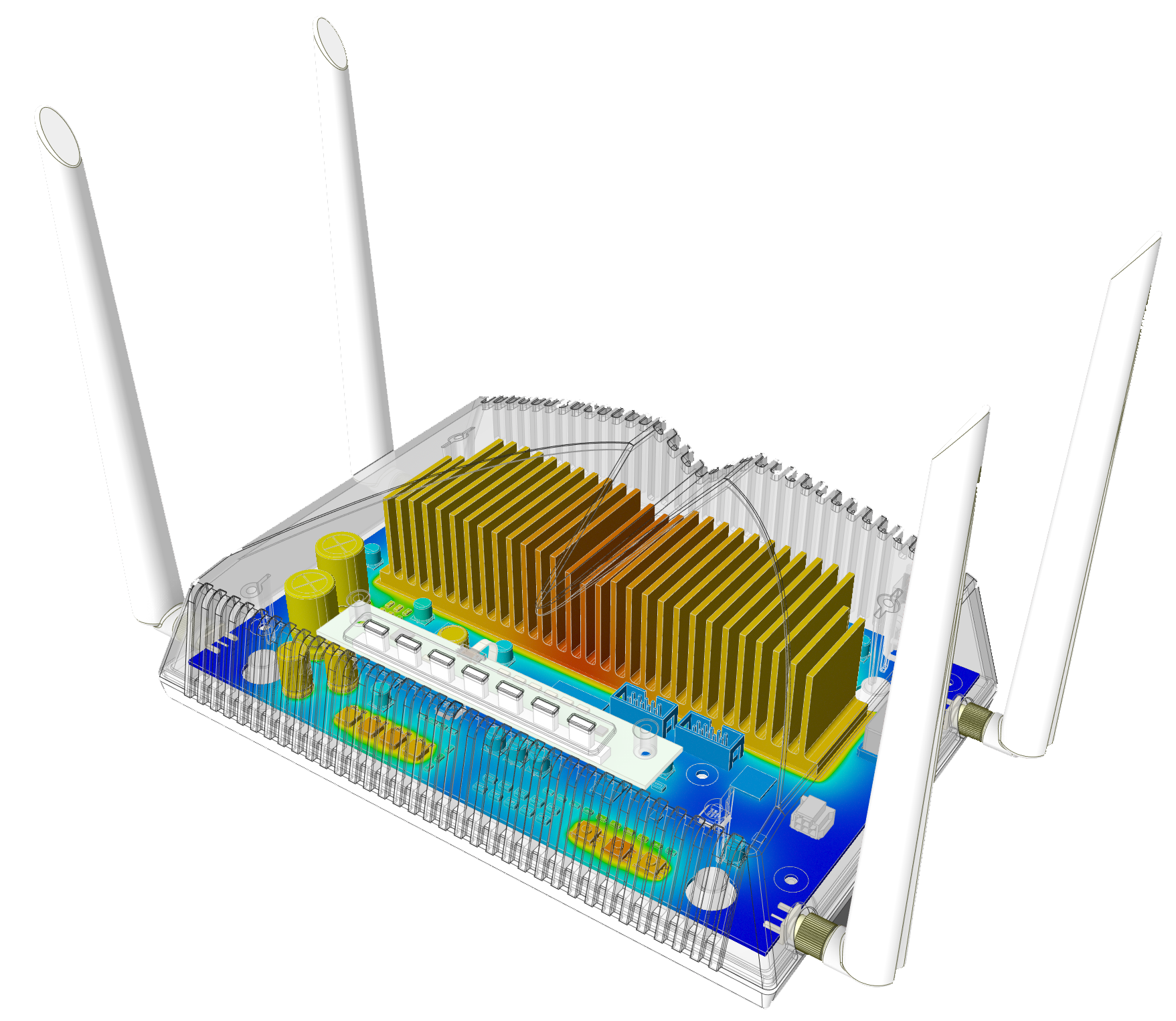Ensuring Safety and Reliability through Model-based Analysis
Integrated and Model-based Safety Analysis methods with a single source principle to efficiently ensure functional safety, mitigate cybersecurity threats; and support the required Safety Analysis Methods. Electrification delivers enormous benefits, including increased autonomy, efficiency, comfort, and an open network. However, these benefits are accompanied by an increasing number of potential risks. Companies are challenged to bring together dozens of electronic components and systems, engineered by multiple internal teams and external suppliers, in a safe manner. Every component must work reliably under every possible driving condition. Equally challenging, the entire system must work together reliably and flawlessly once all components have been integrated.
- System Functions
- Hazard Analysis & Risk Assessment
- Safety Requirements
- Functional and Technical Safety Concepts
- Safety Architecture
- Safety Case
- Analysis of Systematic Failures
- Analysis of Random Failures
- Reliability & Availability
- Threat and Vulnerability Assessment
- Dependent Failure Analysis
- Risk Management
- ISO 26262 V, ARP4754A , ARP4761
- Fault Tree Analysis (FTAs)
- Model-based Design and Safety Analysis
- Common Cause Analysis (CCA)
- System Failure Modes and Effects Analyses (FMEAs)
- Functional Hazard Assessment (FHA)
Check out the key features of Ansys medini analyze
Hazard Analysis and Risk Management
Inbuilt advanced hazard analysis techniques like HAZOP, HARA, and FHA. Identify malfunctions and system failures, ensure compliance with ISO 26262 and ARP 4754A, and customize workflow. Utilize risk graphs, operational situation analysis, and matrices to evaluate hazards. Ensure comprehensive traceability and connection to safety requirements.
Requirement Analysis and Management
Systematic causal analysis of hazards to find weaknesses, triggering conditions by graphical/tabular techniques like cause-effect chains, and seamless integration with RM systems like IBM Rational DOORS and ReqIF/RIF.
Fault Tree Analysis (FTAs)
Supports Fault Tree Analysis (FTA) with a graphical editor for qualitative/quantitative analysis, handles large fault trees, drag & drop creation, probability models, minimal cut-set/path analysis, time-dependent calculations, and heatmaps. Offers FMEDA integration and imports from Isograph® FaultTree+ and CAFTA.
System Failure Modes and Effects Analyses (FMEAs)
Support for function, system design, and process FMEAs compliant with VDA/AIAG, SAE J1739, and IEC 60812 standards. Synchronize FMEA tables with design and process models, manage design controls, and assess risk using customizable Risk Matrices, RPN, and AP. Failure net editor for comprehensive cause/effect chains and connections to management systems.
Rich Traceability
Utilize trace-matrix or quick-trace functionality to define traces between information elements. Navigate and visualize traced elements across models and diagrams. Employ filters and hierarchies for handling large trace matrices and conduct impact analysis with a customizable dependency viewer for graphical trace visualization.
HW Safety Analysis / Reliability Prediction
Embed failure rate and mode prediction in SysML models for system and hardware components using handbooks like SN 29500 and MIL-HDBK-217F. Aggregate/distribute failure rates, apply mission profiles, and manage rates with part libraries. Import BOM from CSV/Excel and IP Design, ensuring consistent use in FTA, FMEDA, and RBD analyses.
Cybersecurity
GSN graphical editor for defining and managing security goals and requirements, aligning with ISO 21434 and UN-ECE R.155. Integrate architectural and functional models with cybersecurity analysis, end-to-end traceability. Generate documents, and integrate with IBM Rational DOORS, Jama, and MS Office for efficient collaboration.
System, Software and Hardware Modeling
Leverage advanced tools for SysML modeling, including a graphical editor and structural modeling capabilities. Visualize and edit dependencies, specify failure modes, and compute safety integrity levels. Import models and maintain traceability to requirements and safety analyses. Automatically generate FTA models from MATLAB®/Simulink® structural path analysis.
Threat Identification
Threat collections are auto-filled with potential threats or scenarios based on asset security attributes and STRIDE mapping. Select relevant threats for assessment and perform feasibility pre-estimation using the HEAVENS project or ISO 21434 guidelines, with flexibility for user-defined methods.
Software Sales
If you have any general questions about our Ansys, Moldex3D, Dante, Particleworks, or CF Turbo simulation software (quotation, licensing, training), please contact us using one of the following contact details. Please note that our software is only available to customers from the following countries: Hungary, Slovenia, Croatia, Serbia, Bosnia and Herzegovina, Montenegro, and Macedonia.
sales (at) econengineering.com
+36 1 279 0320

Greg Lipóczi, Dr.
Commercial Director

László Molnár, Ph.D.
Academic & Key Account Representative

Péter Bara
Key Account Manager
East Hungary

János Simon
Key Account Manager
West Hungary


